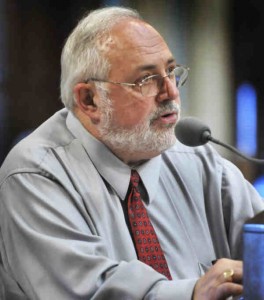The groundswell of blowback against union hubris continues to rise, as both state and national legislators and executives work to reign in Big Labor. As the game of political tug-of-war continues, much of the energy will lapse into rhetoric, but there may be enough momentum now to see some benefit for American businesses come out of the bottom of the funnel.
Last week, the House Committee on Education and the Workforce approved the Workforce Democracy and Fairness Act (H.R. 3094). House majority leader Eric Cantor is determined to bring the bill to the floor this winter. Among other things, the bill would:- Undo the criteria used to determine an appropriate bargaining unit established by the National Labor Relations Board’s recent Specialty Healthcare decision
- Guarantee that no representation election is held within 35 days after the filing of a petition
- Give employers 14 days to prepare for a case before the NLRB
- Gives employees a choice in how a union may contact them
On the legal front, Both the National Association of Manufacturers (NAM) and the National Right to Work Legal Defense and Education Foundation, Inc. filed suit against the NLRB, seeking an order to prevent the NLRB from implementing or enforcing the new notice posting requirement. We’ll have to wait until December to hear the outcome of the legal challenge. In Michigan, several proposed bills would blunt the power of public employee unions in that state. In an example, an “emergency manager” provisions would allow a state-appointed executive to fire city councils and school boards and cancel union contracts. In other moves, legislators gave school boards the ability to fire teachers for any reason during their first five years of employment, gave districts the power to fire tenured teachers for any reason, and gave administrators the ability to manage their workforce based on “effectiveness” rather than seniority. A separate bill would make dues checkoff illegal for teacher unions with more than 50,000 members, a direct jab at the Michigan Education Association. Big Labor still has its defenders, and traction. At a time when honest scrutiny is required to make proper choices, the DOL’s Office of Labor Management Standards (OLMS) published a final rule revising Form LM-30, to be effective November 25th. The rule greatly diminishes the requirements for conflict-of-interest reporting by unions, creating yet another veil for Big Labor to hide behind.
In perhaps the most interesting look at Big Labor/Big Government collusion, a Republican Senator in Michigan has surreptitiously attempted to circumvent the work of his state government, trying to save the flow of millions of dollars of union dues to the SEIU.[9] We have covered the trend of State governments entering alliances with unions to form quasi-governmental “agencies” that force independent home health care workers into paying union dues. In Michigan, the state recently defunded the Michigan Quality Community Care Council, but the dues continue to be extorted from the workers while Senator Roger Kahn attempts to find ways to continue to fund the agency while hiding the intent. “For the state to operate a dubiously formed government entity that has been defunded by the Legislature seems unprecedented,” said Patrick Wright, director of the Mackinac Center Legal Foundation, which uncovered the efforts through acquisition of documentation via the Freedom of Information Act. If you’d like a detailed look at the intricacies of collusion, read the entire article.





